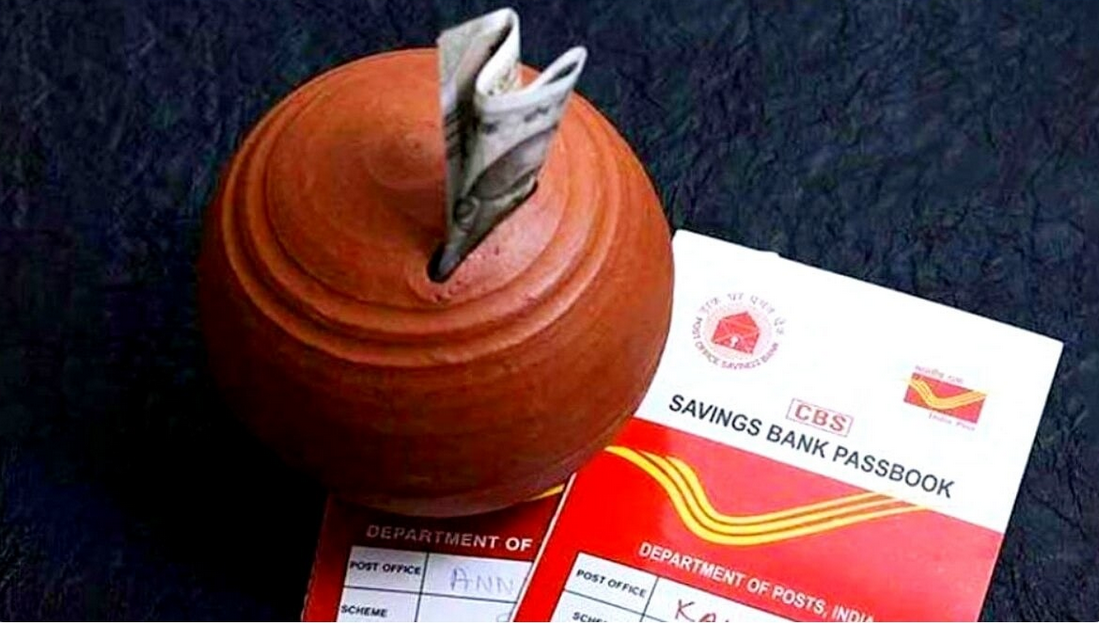Investing in financial schemes that offer guaranteed returns is a priority for risk-averse investors. The Indian Post Office provides a range of government-backed savings schemes that offer security, steady returns, and attractive interest rates. These schemes cater to both general investors and senior citizens looking for safe and long-term investment options.
This article explores the key Post Office Guaranteed Return Schemes, their features, interest rates, and benefits, helping investors make informed financial decisions.

Top Post Office Investment Schemes with Assured Returns
The Indian Post Office offers several saving schemes with varying interest rates, deposit limits, and benefits. Here’s a comprehensive look at some of the best investment options:
1. Post Office Monthly Income Scheme (POMIS)
The Post Office Monthly Income Scheme (POMIS) is ideal for investors looking for a steady income source.
- Interest Rate: 7.40% per annum (payable monthly).
- Minimum Investment: ₹1,000.
- Maximum Investment: ₹9 lakh for individual accounts and ₹15 lakh for joint accounts.
- Key Benefits:
- Provides a fixed monthly income.
- Safe investment with government backing.
- Suitable for retirees and conservative investors.
2. Kisan Vikas Patra (KVP)
Kisan Vikas Patra (KVP) is a savings scheme that doubles the investment in a fixed period.
- Interest Rate: 7.5% per annum (compounded annually).
- Minimum Investment: ₹1,000.
- Maximum Investment: No upper limit.
- Lock-in Period: Around 115 months (varies based on interest rate changes).
- Key Benefits:
- Ensures capital appreciation with guaranteed returns.
- No maximum limit, making it suitable for long-term wealth accumulation.
3. Sukanya Samriddhi Yojana (SSY)
This scheme is specifically designed for the financial security of a girl child.
- Interest Rate: 8.2% per annum (compounded annually).
- Eligibility: Parents/guardians of a girl child below 10 years.
- Minimum Investment: ₹250 per year.
- Maximum Investment: ₹1.5 lakh per year.
- Maturity Period: 21 years or until the girl turns 18 for partial withdrawal.
- Tax Benefits: Under Section 80C of the Income Tax Act.
4. Senior Citizens Savings Scheme (SCSS)
The Senior Citizens Savings Scheme (SCSS) is designed for retirees, offering high returns and security.
- Interest Rate: 8.2% per annum.
- Minimum Investment: ₹1,000.
- Maximum Investment: ₹30 lakh.
- Eligibility: Individuals above 60 years. (Retired individuals aged 55-60 can invest under certain conditions).
- Key Benefits:
- Quarterly interest payout.
- Tax deduction under Section 80C.
5. National Savings Certificate (NSC)
A low-risk investment scheme suitable for tax savings and wealth accumulation.
- Interest Rate: 7.7% per annum (compounded annually).
- Minimum Investment: ₹1,000.
- Maximum Investment: No upper limit.
- Lock-in Period: 5 years.
- Tax Benefits: Eligible under Section 80C.
6. Recurring Deposit (RD) Scheme
A disciplined savings option allowing regular monthly deposits.
- Interest Rate: 6.7% per annum.
- Minimum Investment: ₹100 per month.
- Maximum Investment: No upper limit.
- Maturity Period: 5 years.
7. Public Provident Fund (PPF)
A long-term savings option with tax-free returns.
- Interest Rate: 7.1% per annum (compounded annually).
- Minimum Investment: ₹500 per financial year.
- Maximum Investment: ₹1.5 lakh per year.
- Lock-in Period: 15 years.
- Tax Benefits: Exempt under Section 80C, and interest is tax-free.
8. Post Office Savings Account
A simple savings option with easy access to funds.
- Interest Rate: 4% per annum.
- Minimum Balance Requirement: ₹500.
- Key Benefits:
- Similar to a regular bank savings account.
- Ideal for maintaining liquidity while earning interest.
Comparison of Post Office Investment Schemes
| Scheme | Interest Rate | Minimum Deposit | Maximum Deposit | Lock-in Period | Tax Benefits |
|---|---|---|---|---|---|
| Post Office Monthly Income Scheme (POMIS) | 7.40% | ₹1,000 | ₹9 lakh (individual) / ₹15 lakh (joint) | 5 years | No |
| Kisan Vikas Patra (KVP) | 7.5% | ₹1,000 | No Limit | 115 months | No |
| Sukanya Samriddhi Yojana (SSY) | 8.2% | ₹250 | ₹1.5 lakh per year | 21 years | Yes (80C) |
| Senior Citizens Savings Scheme (SCSS) | 8.2% | ₹1,000 | ₹30 lakh | 5 years | Yes (80C) |
| National Savings Certificate (NSC) | 7.7% | ₹1,000 | No Limit | 5 years | Yes (80C) |
| Recurring Deposit (RD) | 6.7% | ₹100 | No Limit | 5 years | No |
| Public Provident Fund (PPF) | 7.1% | ₹500 | ₹1.5 lakh per year | 15 years | Yes (80C) |
| Post Office Savings Account | 4% | ₹500 | No Limit | None | No |
Frequently Asked Questions
1. Which Post Office scheme offers the highest interest rate?
The Sukanya Samriddhi Yojana (SSY) and Senior Citizens Savings Scheme (SCSS) currently offer the highest interest rate of 8.2% per annum.
2. Are Post Office savings schemes taxable?
Some schemes, like PPF, SSY, and NSC, offer tax benefits under Section 80C. However, interest earned on other schemes like POMIS, SCSS, and KVP is taxable.
3. Can I withdraw my money before the maturity period?
Premature withdrawals are allowed in PPF, SSY, and SCSS under specific conditions. Other schemes, like NSC and KVP, require full tenure completion.
4. How safe are Post Office investment schemes?
All Post Office schemes are government-backed, ensuring high security and guaranteed returns.
5. Which scheme is best for senior citizens?
The Senior Citizens Savings Scheme (SCSS) is the best option due to its high interest rate of 8.2% and quarterly payouts.
Post Office savings schemes offer secure investment opportunities with guaranteed returns, catering to different financial goals. Whether you seek monthly income, long-term growth, or tax-saving options, these schemes provide reliable choices for conservative investors. Always assess interest rates, lock-in periods, and tax implications before investing to align with your financial needs.
Click here to know more.
Kishan is a knowledgeable writer specializing in agriculture and the latest government job recruitments, delivering clear and insightful content to inform and empower readers.
